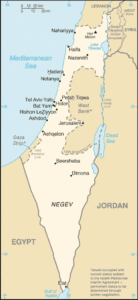 The First Aliyah occurred in the late 1800s. Most of these new immigrants came from Russia and Yemen. The Second Aliyah, prior to World War I, was largely made up of Russian Jews, following pogroms and anti-Semitism. This group started the first kibbutz and revived the Hebrew language.
The First Aliyah occurred in the late 1800s. Most of these new immigrants came from Russia and Yemen. The Second Aliyah, prior to World War I, was largely made up of Russian Jews, following pogroms and anti-Semitism. This group started the first kibbutz and revived the Hebrew language.
After World War I and until 1923, the Third Aliyah came to Israel. This group was also from Russia, but they arrived after the establishment of the British Mandate over Palestine and the Balfour Declaration and set about creating a sustainable Jewish agricultural economy by strengthening and building the kibbutz movement and its ancillary institutions.
The Fourth Aliyah, which took place 1924-1929, was made up of Jews seeking to escape anti-Semitism in Poland and Hungary. The Fifth Aliyah coincided with the rise of Nazism in Germany and extreme nationalism across Eastern Europe. Nearly one quarter of a million Jews entered Mandate Palestine between 1929 and the beginning of World War II.
 In 1933 the Nazis rose to power.The blatant anti-Semitism and the unbridled Nazi aggression caused many to move to Israel as part of the fifth Aliyah. This included 60,000 German immigrants, and 30,000 from other German speaking areas, such as Austria and Czechoslovakia.
In 1933 the Nazis rose to power.The blatant anti-Semitism and the unbridled Nazi aggression caused many to move to Israel as part of the fifth Aliyah. This included 60,000 German immigrants, and 30,000 from other German speaking areas, such as Austria and Czechoslovakia.
On 14 May 1948, the day before the end of the British Mandate of Palestine, the leaders of the Jewish community in Palestine, led by prime minister David Ben-Gurion, made a declaration of independence, of the State of Israel.
Immigration of Holocaust survivors and Jewish refugees from Arab lands doubled Israel’s population within one year of its independence. Over the following years approximately 850,000 Sephardi and Mizrahi Jews fled or were expelled from surrounding mostly due persecution in Arab countries, and in smaller numbers from Turkey, India, Afghanistan, and Iran.
 Israel’s Jewish population continued to grow at a very high rate, fed by waves of Jewish immigration from round the world, particularly the massive immigration of 400,00 Soviet Jews, who arrived to Israel in the early 1990s following the dissolution of the USSR. Some 80,000 -100,000 Ethiopian Jews also immigrated to Israel since the early 1980s. Israel also has small populations of Italian Jews and Romaniote Jews from Greece, Cyprus and Turkey. Argentinians are the largest immigrant group from Latin America.
Israel’s Jewish population continued to grow at a very high rate, fed by waves of Jewish immigration from round the world, particularly the massive immigration of 400,00 Soviet Jews, who arrived to Israel in the early 1990s following the dissolution of the USSR. Some 80,000 -100,000 Ethiopian Jews also immigrated to Israel since the early 1980s. Israel also has small populations of Italian Jews and Romaniote Jews from Greece, Cyprus and Turkey. Argentinians are the largest immigrant group from Latin America.
In total, 40,000 French Jews have emigrated since 2006, after the kidnapping and brutal anti-Semitic killing of a young Jew, in the Paris suburbs, which was followed by a shooting in a Jewish school in the southwest city of Toulouse in 2012.
Today there are about 6 million Jews living in Israel. This is comprised of all Jewish diaspora communities, including Ashkenazi Jews, Sephardi Jews, Mizrahi Jews, Beta Israel, Cochin Jews, Bene Israel, Karaite Jews, and many other groups from around the world. However, Israeli Aliyah and Integration Minister Pnina Tamano-Shata said that as many as 90,000 new immigrants are expected to arrive in Israel in 2020-2021, post corona virus.